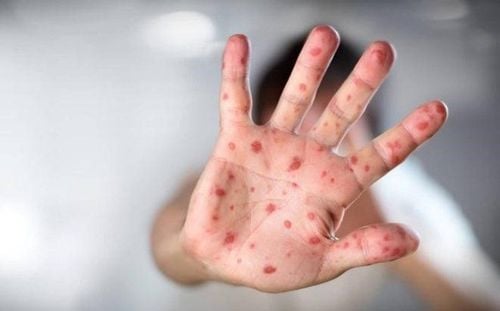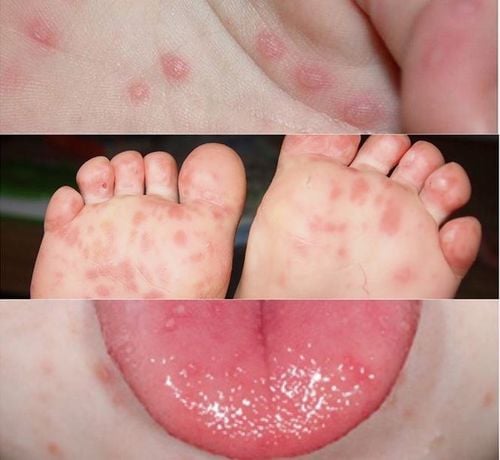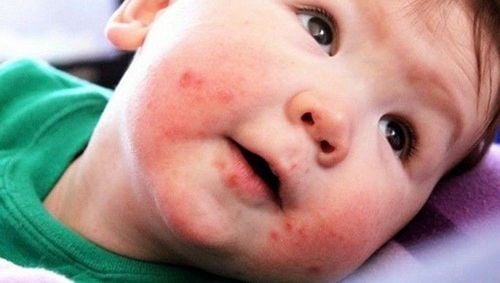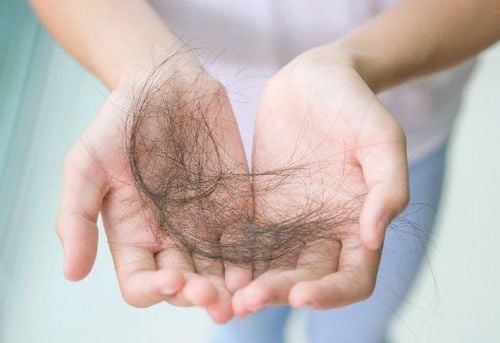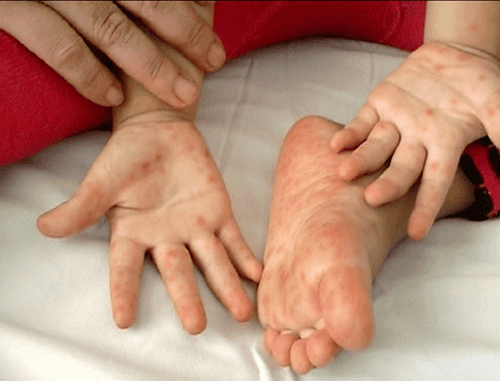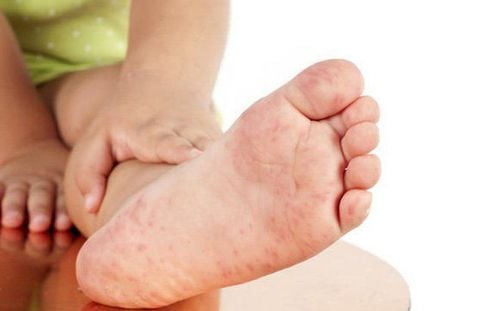This is an automatically translated article.
Hands, feet, and mouth is a common infection in children, causing sores inside or around the mouth, as well as a rash and blisters on the hands, feet, or buttocks. Although these lesions can be painful for the patient, hand, foot and mouth lesions are quite benign and not serious.
1. Hand, foot and mouth disease pictures
Hand, foot and mouth disease is a common but fairly benign infectious disease, common in young children in late summer and early autumn. Coxsackievirus A16 and other strains of the same type are responsible for the disease. Initial symptoms include low-grade fever and malaise. Then, on the palate, tongue, oral mucosa and uvula of the pediatric patient, vesicular lesions will appear, causing pain and difficulty in eating. In young children, difficulty swallowing and drooling from blisters in the mouth can lead to dehydration, which is worrisome. Over the next 1-2 days, these lesions will begin to develop in other parts of the body. The blisters are round or oval, surrounded by an erythematous halo. The edges of the palms and soles are preferred sites for blisters, but lesions can still occur over the entire body.
Many small and discrete vesicular lesions on fingers and palms; Similar lesions also appear on the feet. Some vesicles are usually conspicuously demarcated.
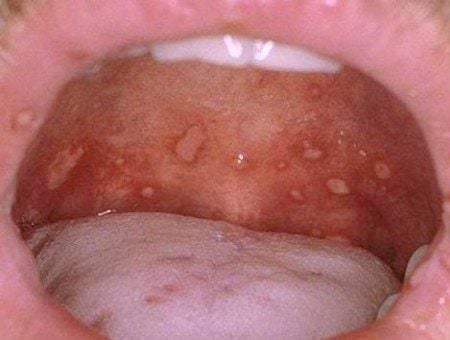
Hình ảnh bệnh tay chân miệng với các mụn nước trong khoang miệng
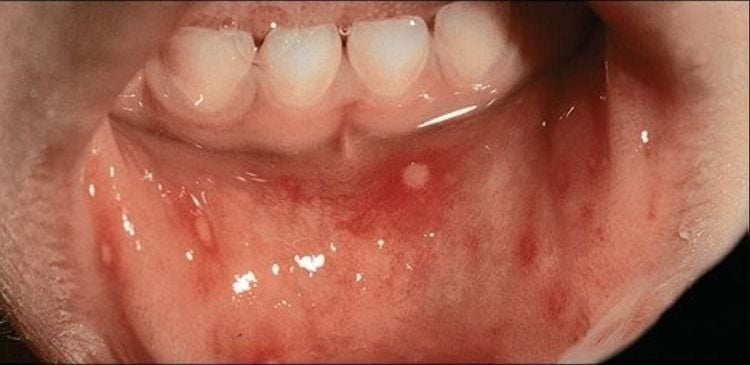
Hình ảnh bệnh tay chân miệng
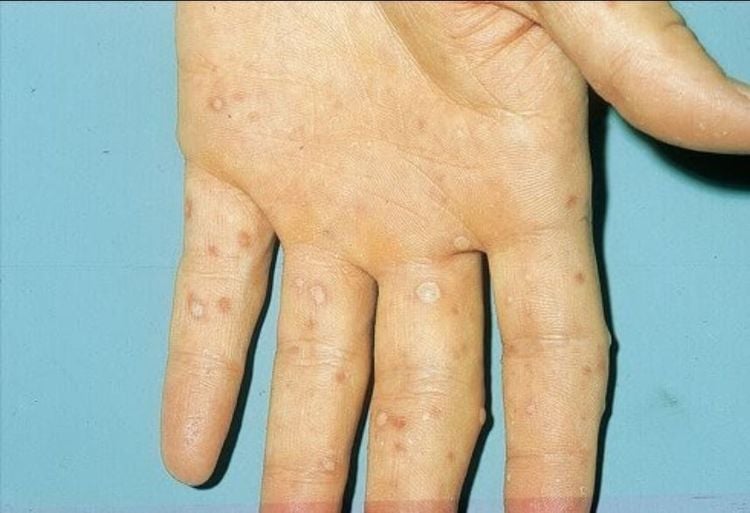
Hình ảnh bệnh tay chân miệng ở bàn tay
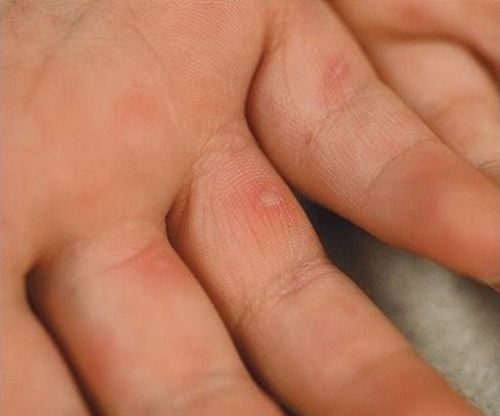
Hình ảnh bệnh tay chân miệng với các mụn nước đỏ
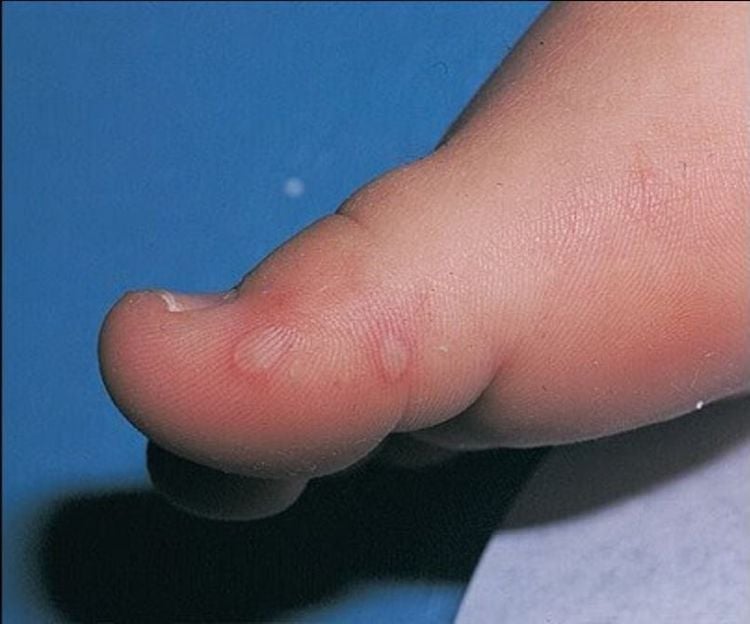
Hình ảnh bệnh tay chân miệng ở chân
2. Diagnosis and treatment of hand, foot and mouth disease
The doctor will ask about the child's symptoms and look for sores or rashes. Usually, this examination is enough to determine if a child has hand, foot, and mouth disease. However, your doctor may also take throat swabs, stool samples, or blood for further testing.
Currently, there is no cure or vaccine for hand, foot and mouth disease. Because the disease is caused by a virus, antibiotics will not be effective. The disease usually goes away on its own after 7-10 days if the child is cared for well and properly. During this time, the doctor can help the child manage the symptoms with:
Over-the-counter pain relievers such as ibuprofen, acetaminophen, or numbing mouth sprays. Note, do not use aspirin because it can cause serious illness in children. Use cold foods like ice cubes, yogurt or smoothies to soothe a sore throat. Avoid fruit juices and sodas, as they contain acids that will irritate the sores. Anti-itch and rash creams like calamine. Serious complications from hand, foot, and mouth disease are rare. In particular, enterovirus 71 is more likely to cause problems than other strains of the virus that also cause this disease. Some complications can include:
Dehydration from mouth sores making it difficult for a child to swallow Swelling of membranes around the brain and spinal cord (viral meningitis) Swelling / inflammation of the brain Swelling / inflammation of the heart muscle Paralysis
3. Prevention of hand, foot and mouth disease
Children are most contagious during the first 7 days of illness. However, the virus can stay in a patient's body for days or weeks, and is transmitted through saliva or feces. To reduce the risk of infection, parents should take the following steps:
Wash your hands carefully, especially after changing diapers or wiping your baby's nose. It also helps children keep their hands clean. Teach children to cover their mouth and nose when coughing or sneezing. It's best to cover with a disposable tissue, or else your child's sleeve can also be used. Clean and disinfect surfaces and items such as children's toys and doorknobs. Do not hug or kiss someone who has hand, foot, and mouth disease. Do not share cups or personal items with sick people. Do not send the patient to school or daycare until the symptoms are gone. Ask your doctor about when to send your child back to school.
Although hand, foot and mouth does not pose much danger, it is contagious and causes pain and discomfort to children. If you want early detection and timely treatment, parents need to take their children to the doctor as soon as they see abnormal signs, similar to the pictures of hand, foot and mouth disease in children in the article. Especially during the epidemic season, to avoid overcrowding and overcrowding at the hospital, making the baby tired or cross-infecting some other diseases, parents should also choose reputable and specialized medical facilities. Karma.
Vinmec International General Hospital is the address for receiving and examining respiratory diseases that infants and young children are susceptible to: viral fever, bacterial fever, respiratory infection, pneumonia In children, hand, foot and mouth....With modern equipment, sterile space, minimizing the impact as well as the risk of disease spread. Along with that is the dedication from the doctors with professional experience with pediatric patients, making the examination no longer a concern of the parents.
Please dial HOTLINE for more information or register for an appointment HERE. Download MyVinmec app to make appointments faster and to manage your bookings easily.
Reference sources: medicinenet.com, webmd.comSEE ALSO:
Hand, foot and mouth disease, dengue in the season: Precautions to be taken How to take care of children with hand, foot and mouth disease? Hand, foot and mouth disease: Clinical, diagnostic, complications




